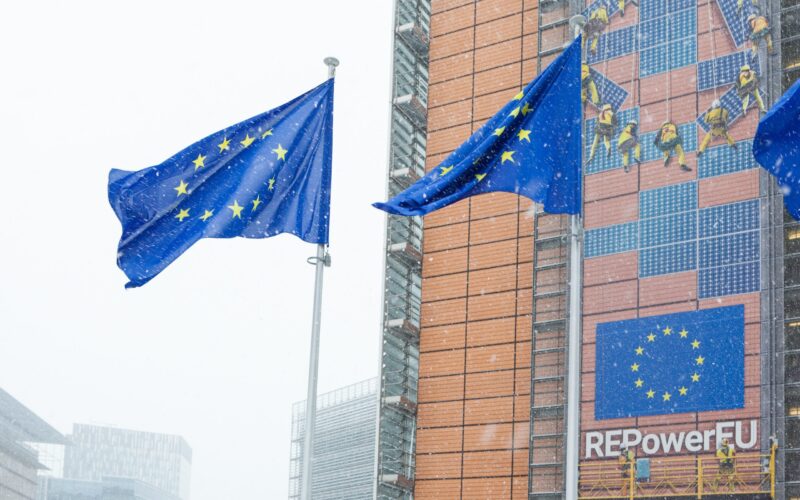The European Commission released its 2024 Climate Action Progress Report today, revealing a significant 8.3% drop in net greenhouse gas (GHG) emissions across the EU in 2023 compared to the previous year. This marks the most substantial annual decline in decades, apart from the pandemic-driven 9.8% reduction in 2020. Currently, net GHG emissions sit 37% below 1990 levels, with the EU’s GDP having grown by 68% in the same period, underscoring a sustained decoupling of emissions from economic growth. The EU remains on course to meet its target of a minimum 55% emissions reduction by 2030.
This Climate Action Progress Report, supplementing the annual State of the Energy Union Report, reviews the EU’s advancements toward emission reduction targets, documenting historical emissions, projected future trends, and current climate policies, financial contributions, and adaptation measures.
Emissions from power and industrial sectors under the EU Emissions Trading System (ETS) showed a record decrease of 16.5% in 2023. The ETS sector has now reduced emissions by around 47.6% compared to 2005 levels, aligning with the goal of a 62% reduction by 2030. Specifically, emissions from electricity production and heating fell by 24% year-over-year, thanks to increased adoption of wind and solar energy and the shift away from coal. Meanwhile, aviation emissions rose by 9.5%, continuing their rebound from COVID-19 lows.
The EU ETS raised €43.6 billion in 2023, earmarked for climate action initiatives. Of this, €7.4 billion is allocated to the Innovation Fund and the Modernisation Fund, with the rest directed to Member States. Emissions from sectors governed by the Effort Sharing Regulation, including buildings, agriculture, domestic transport, small industry, and waste, decreased by around 2% in 2023, led by a 5.5% drop in the buildings sector. Agricultural emissions were down by 2%, while transport emissions saw a marginal decline.
In the natural carbon sink sector, the EU reported an 8.5% increase in 2023, reversing a decade-long decline within Land Use, Land Use Change, and Forestry (LULUCF). Nonetheless, additional efforts are necessary to achieve the 2030 objectives.
Although the report highlights positive trends in emissions reductions, 2023 was also marked by extreme climate events across Europe, including historic wildfires, one of the wettest years on record, severe marine heatwaves, extensive flooding, and continued temperature rises. The Commission’s recent communication on Managing Climate Risks and the European Climate Risk Assessment emphasized the urgency of integrating climate risk across all levels of governance and sectoral policies.
“The EU is leading the way in the clean transition, with another year of strong greenhouse gas emission reductions in 2023. The EU now represents 6% of global emissions. As we head off soon to COP29, we once again demonstrate to our international partners that it is possible to take climate action and invest in growing our economy at the same time. Sadly, the report also shows that our work must continue, at home and abroad, as we are seeing the harm that climate change is causing our citizens,” said Wopke Hoekstra, Commissioner for Climate Action.





















